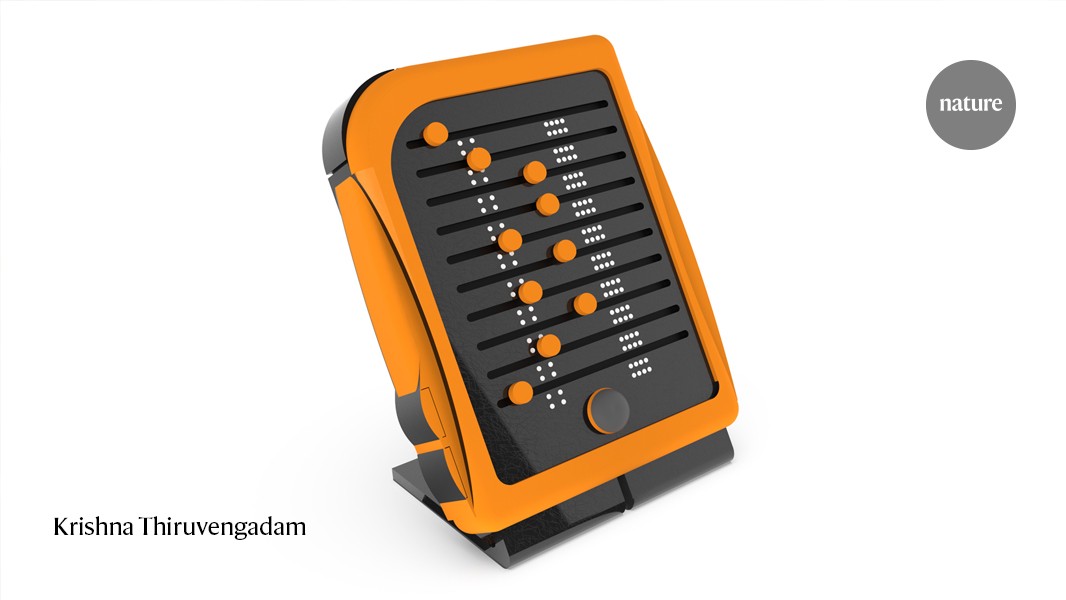
- Select a language for the TTS:
- UK English Female
- UK English Male
- US English Female
- US English Male
- Australian Female
- Australian Male
- Language selected: (auto detect) - EN
Play all audios:
“Technology is now essential to the lives of blind people, yet many computer programs and devices aren’t universally accessible,” says Jo Fullerton, Technology for Life Coordinator at the
Royal National Institute of Blind People in Edinburgh, UK. While pursuing a master’s degree in integrated product design at Delft University of Technology in the Netherlands, Krishna
Rajagopal developed a tool that he thinks can help. CuriO combines auditory and tactile stimuli to make coding accessible to people with visual impairments. “CuriO brings an exciting new
perspective to programming. For the first time, blind developers have the choice of a multimodal device that could make programming quicker, easier and more efficient,” says Parham Doustdar,
a software developer at the trip-planning website, Booking.com, who is completely blind. _Nature_ spoke to Rajagopal, now based in Chennai, India, to learn what makes CuriO tick. WHY DID
YOU DEVELOP CURIO? Coding has become an essential skill of the modern world, and many employers need skilled programmers for a wide variety of roles. Although many people with limited vision
aspire to code just as their sighted counterparts do, they don’t have equal opportunities. That’s especially true in India, where I’m from, and other developing countries. I aimed to design
an affordable and accessible tool that could close the gap, opening up lucrative careers to the visually impaired community. HOW DOES CURIO WORK? CuriO allows blind and partially sighted
users to navigate and skim programming code. When code is written using an external keyboard, or is loaded into CuriO’s text editor, on-screen visual elements, such as code structure and
hierarchy, are translated into a pattern of moving buttons organized in rows on the device. Each row represents a line of code, and the position of the button indicates indentation. As the
user navigates the code using a joystick, button positions update in real time. By pressing certain buttons, users can hear specific characters, words, lines or pages read aloud. This allows
users to correctly place the cursor for debugging. CuriO is compatible with Python, Java, Javascript and C++ code, and runs on Linux. ENJOYING OUR LATEST CONTENT? LOGIN OR CREATE AN ACCOUNT
TO CONTINUE * Access the most recent journalism from Nature's award-winning team * Explore the latest features & opinion covering groundbreaking research Access through your
institution or Sign in or create an account Continue with Google Continue with ORCiD

:max_bytes(150000):strip_icc():focal(319x0:321x2)/people_social_image-60e0c8af9eb14624a5b55f2c29dbe25b.png)





:max_bytes(150000):strip_icc():focal(399x0:401x2)/sam-smith-0-800-2f64e0ed77644c6fa952a2bf8ffb3b5c.jpg)